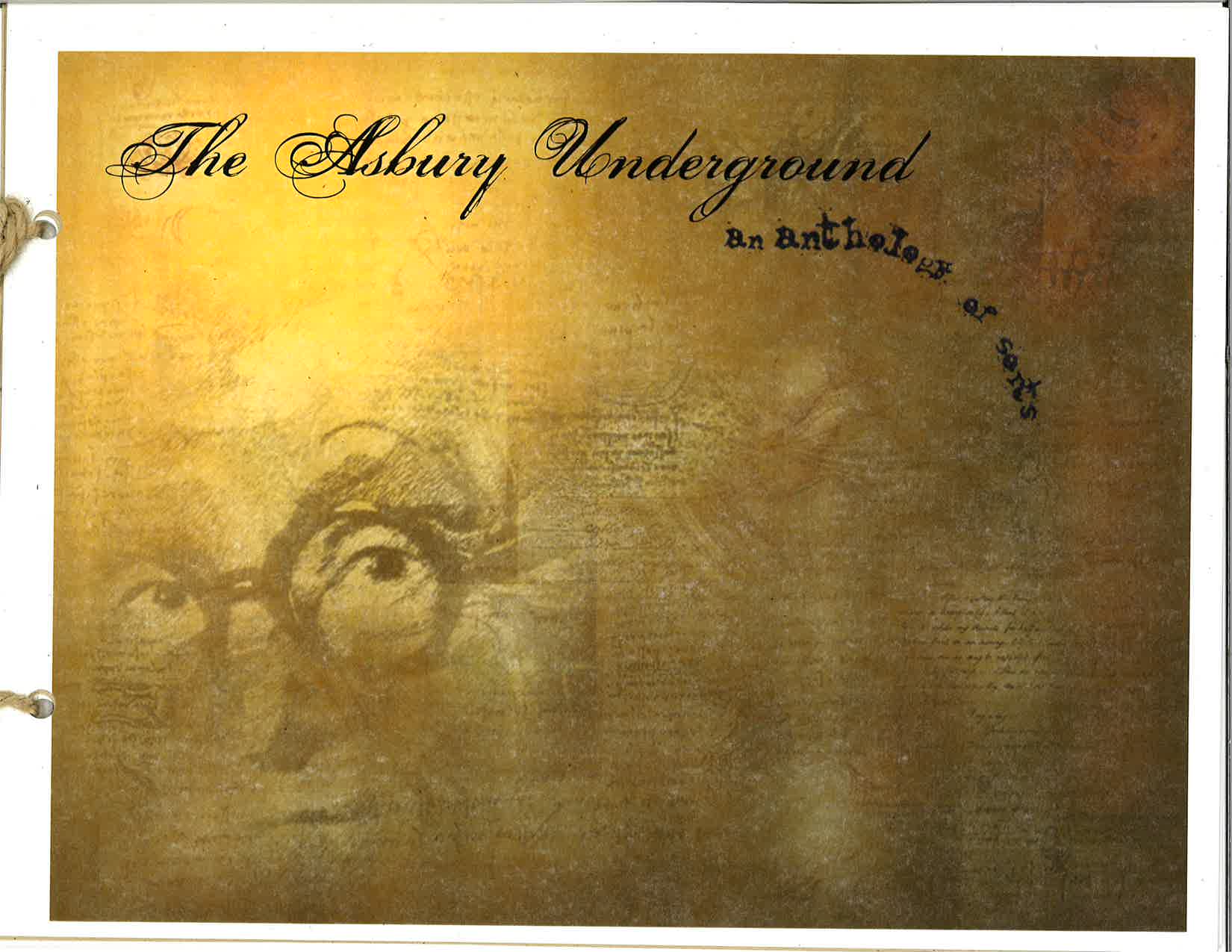Writer Jana Wiersema created the followed multimedia package that features the history and details of underground student publications at Asbury University. Chronicles of the underground: A history of Asbury’s unofficial publications
Chronicles of the underground: A history of Asbury’s unofficial publications

The internet is a haven for candid conversations on any topic—and that includes Asbury University. You can follow @AsburyOnion on Twitter for satirical headlines that lampoon current events, request positive shoutouts from @AsburyAnonymous or browse through “Overheard at Asbury” on Facebook to read anonymous submissions of everyday absurdities.
But how did students participate in these kinds of conversations before the rise of social media? Sure, The Collegian has been around since 1925, according to a 2015 article by Matthew Pertz, but it was never the only voice on campus. Even before social media, Asbury was the birthplace of more than a few student-run publications. Excluding The Collegian, each of these was written and printed without the support or approval of the administration, and each one told a different story of students’ opinions and experiences.

“We have seen our newspaper take what can be termed a most one-sided attitude,” Weller continued. “And this is what made us decide to write.… We do not claim to be completely unbiased for we are not, but we do deserve the right to be heard.”
All three issues focused on the circumstances regarding the sudden dismissal of the university’s president, Dr. Karl Wilson. The writers sought both to defend the former president and criticize the Board of Trustees for its methods of dismissal by presenting testimonies from board members and advice from lawyers. While the details of campus circulation are unknown, the March issue of “The Time Capsule” stated that the periodical was mailed to almost 1,500 alumni who were ministers from a list provided by “an interested person in Wilmore.”
Over 20 years later, another publication surfaced on Asbury’s campus: the aptly-named “The Underground,” published in 1989 according to the university’s archives. Vol. 1.1 of this work stated: “This issue of The Underground was produced by Scott Russell, student at Asbury College. There is no charge to receive this ‘zine; it is run right now at my own expense. However, a donation would be a nice thing to send. Feel free to send responses and opinions, not to mention poems and art, which, should funds permit, might be printed. If the Lord blesses my attempt, I hope to expand the size and scope of this ‘zine. Thanx (sic).”
“The Underground,” which called itself “an alternative press,” resembled a collage more closely than a traditional magazine; each page was a mix of pasted text and images. Its articles argued against abortion, questioned the right to burn the flag and discussed the implications of the peace symbol’s origins. The ‘zine also included reviews of musical albums and a critique of the film “Dead Poets Society.”
The second issue warned that if “The Underground” did not get an adequately large response—be it positive or negative—Russell would have to infer that he was “wasting [his] time and money” and discontinue the publication. As these two issues were the only ones available in Asbury’s archives, it’s likely that he was disappointed by student reaction and chose to stop printing his ‘zine.
The next publication to take Asbury by storm was not a newspaper or a ‘zine but a little red book, named for its red cardstock cover. According to a 2005 Collegian article by Brooke Collins, the so-called Red Book gave “specific examples of students’ deviation from community standards without naming the

students involved in those incidents.” Collins wrote that two of these anonymous examples were accounts of homosexual behavior. She also stated that the writers of the Red Book claimed that none of the involved students in these situations were punished.
In another article, Collins wrote that the 81-page book was distributed on May 8, 2005, the date of graduation. She stated that the book was sent to “Asbury College’s administration, full-time faculty members … every member of the Board of Trustees, the Alumni Board and the Parents Advisory Committee.” Collins also noted that the book contained the signatures of several students and began with a cover letter from Adam Aukerman, the student body president of the past year.
Unfortunately, the unnamed accounts in the Red Book may have been factually suspect. In one of Collins’s articles, Joe Brockinton, the vice president of Student Development at the time, said that the Red Book was “an unfortunate collection of information that is for the most part inaccurate, exaggerated or incomplete, but has been broadly distributed as truth.” Brockinton added that the cases discussed in the Red Book could not be proved or disproved due to confidentiality. He also implied that it was a breach of confidentiality to publish those cases in the first place.
A written history of 2000–09 on Asbury’s website stated that, “Speaking for the Board, Chairman C.E. Crouse condemned the way in which the students had raised issues, but announced that an official task force would be appointed to ‘review the areas of concern that have been raised.’” Another article by Collins stated that the task-force sought to talk to a “cross-section of students about the campus life issues the Red Book discussed, not only the document itself.” Collins attributed this information about the task force to Suzanne Gehring, who is the current head of Asbury’s archives and special collections and was an advisor for the student-faculty counsel at the time. Collins noted that campus life issues raised by the Red Book included “authority of Residence Life staff, dress code and enforcement of the regulations … in the college’s handbook.”
As far as student response was concerned, opinions varied. The author of one anonymous Collegian editorial wrote that the Red Book was simply “an explosion of compressed steam that released gas into the atmosphere and made the authors feel a little better. And in the process it shook things up a little.” Another editorial writer, Benjamin Lewis, responded that he had yet “to hear anything legitimate against the Red Book.” One Collegian writer, John Zambenini, wrote a satirical article comparing the Red Book to the script of “Star Wars.” Zambenini concluded that while both works were “pretty flimsy,” he “would have to declare Star Wars the winner, if for no other reason than the ‘Millenium Falcon’ is the most fantastic contraption ever conceived by the human mind, but mostly because ‘Star Wars’ is longer.”
While publications like the Red Book and “The Time Capsule” seemed intent on raising awareness about issues involving Asbury, not every student publication was political in nature. Sometime between 2004-2006, according to Gehring, a group of students published “The Asbury Underground: An Anthology of Sorts.”
The editor, Greg Weidman of the class of ‘06, wrote in his introduction: “Poetry, imagery, short storer … rey. Who could’ve imagined all these together in one glorious volume? Actually, it’s probably been done before. Lots. Yet we plunged forward with a dream in our hearts and a hollow space in our wallets. And look at us now. We still have a hollow space in our wallets. Deepest gratitude to those who encouraged us and to those who submitted material. Press on, dear reader.”
Each written piece was copied in what appears to be the author’s own handwriting, and the end pages noted that the anthology was designed in InDesign and Photoshop. One short poem, submitted by Lewis, read: “There is a bench beside Glide-Crawford/at the back of the sign that faces eastward./The sign says ‘Asbury College’ plainly./The bench is used for kissing, mainly.”
The anthology also contained the texts of two emails with the senders’ names removed. One sender, while supportive of the anthology, expressed confusion at being invited to submit content. He/she also wondered if the invitation had been sent out to all faculty members or to everyone on campus.
“I ask because I do not instantly think of myself as either ‘awesome’ or a ‘talented cat,’” the sender wrote. “Nor am I a poet, photographer, or short-story writer.… If you wanted the occasional opinion piece or commentary, I could perhaps oblige, but otherwise I can’t think why I was included in your mailing.… YOU GUYS ARE COOL and I love ya.”
More recently, an anonymous student or group of students released a parody of The Collegian, entitled “The Absurd Collision,” on April 1. According to the publication’s Twitter page, issues were also produced in May and December 2016.

A recent issue of “The Absurd Collision” includes “Lies Asburians tell themselves,” contrasting editorials on turning left and right, an “Ask Absy” column and fake ads. The lampoon also contains a list of rules, such as “We are equal opportunity offenders – we try to make fun of whoever” and “We make light of campus phenomena and student behavior but avoid consciously picking at specific individuals or administration.”
“The Absurd Collision” is one of the more recent examples of an underground student publication, but it’s doubtful that it will be the last. Students have more outlets to express their opinions than ever before, thanks to social media.
“For the most part, student-run publications and social media give students an opportunity to express their thoughts and concerns in a creative way that contributes to creating a community that is engaged in problem-solving and thoughtful civil discourse,” said Sarah Baldwin, vice president of Student Development and dean of students. “However, when any publication or social media expression has the intent to divide, gossip or be deconstructive to a community, it is unhelpful and most likely not part of the way of Christ in relationships.
“Any time we put our thoughts in writing,” she continued, “whether it be ‘underground’ on social media or in a university-sponsored format, there is always the work of asking ourselves if we are doing so to encourage each other to be the body of Christ with unity, respect and living peacefully, or are we seeking division for division’s sake?”
When asked about the legacy of student publications, Gehring said, “I think that, to me, they are legitimate examples of student thought, student behavior from various periods of time, motivated maybe by certain issues or situations.”




